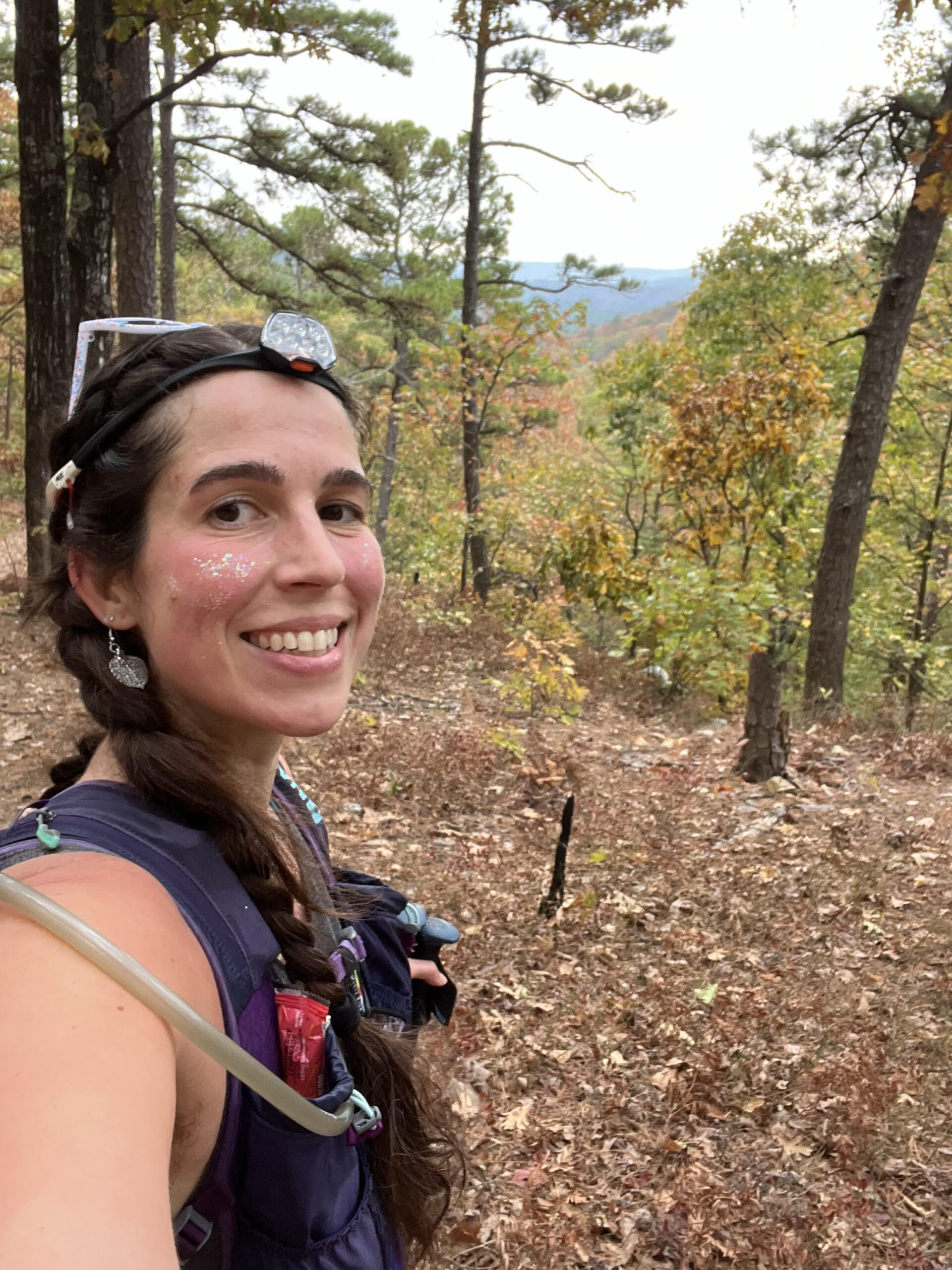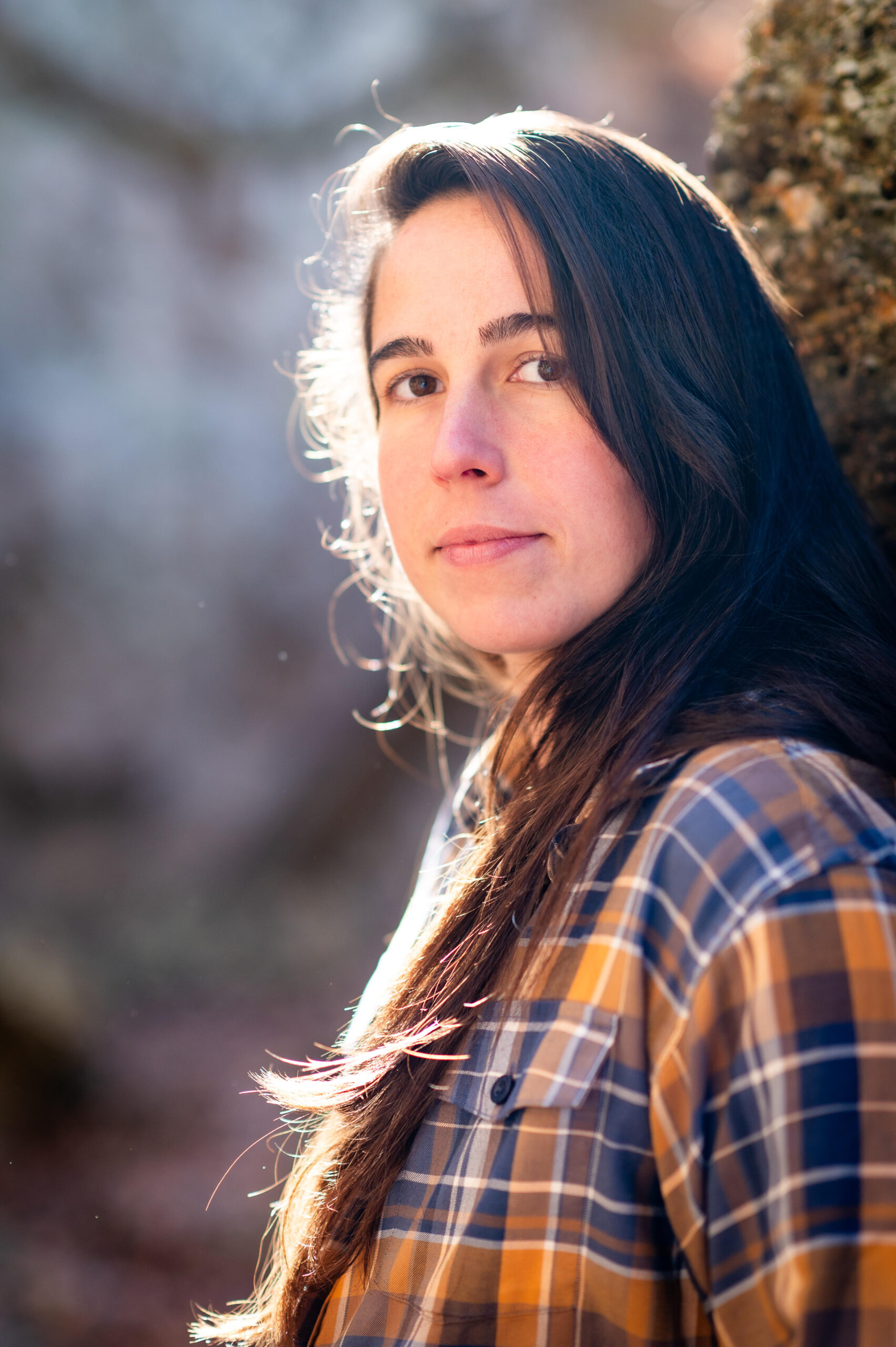DNF Doesn’t Define My Story

The Mission
After being diagnosed with POTS/Dysautonomia in 2020, I started to see a lifetime of physical struggles and “exercise intolerance” (my favorite of the symptoms listed in the pamphlet given to me by the cardiologist) in a new light, and learn to work with my body in new ways. By Spring 2022, the idea to set a women’s self-supported record on the Ouachita Trail had weaseled its way into my mind and I couldn’t get it out.
I chose the Ouachita Trail, a 223-mile route through the Ouachita Mountains from Eastern Oklahoma to Central Arkansas, because I had once lived quite close to the eastern terminus and felt I had some unfinished business with the area. I set what felt like a reasonable goal of completing the route in 6 days. I rounded down the daily mileage to “about 30”, though simple math will tell you that it’s actually exactly 37.17.
I trained diligently through the spring and summer, logging many hundreds of miles, including a few multi-25-mile-day backpacking trips, and a handful of 30-34 mile days. I reasoned that marathon runners don’t run full marathons before the race, so I didn’t need to hit the full mileage before my attempt. I felt as prepared as someone with absolutely no idea what I was getting into could possibly feel.
ADVERTISEMENT
The Attempt
The first day was a blur. 5 am drop off, hug from Dad, photo at the start sign, pushing go on my Garmin InReach Mini, and 34.1 miles of rocks and rocks and rocks. Throughout the day, my feet became sore, then tingly and painful, but I powered through. Around 10 pm, I cruised into Pashubbe Shelter, hours after the early November sunset, to find a deep silence—no breeze bent the trees, no critter disturbed the thick layer of leaves on the ground, no hikers occupied the shelter. Just as I was pressing the last tent stake into the ground, a skunk ran by, caught in the searching beam of my headlamp. Twenty minutes later, I lay wide awake in my sleeping bag, eyes peeled, and heart racing. I listened for any sound, any disturbance—the absurd silence was more unsettling than the normal sounds of a forest have ever been. My mind went in circles: I should be sleeping. My feet hurt. Those rocks were brutal. I should be sleeping. What was that?
Minutes turned to hours, and I couldn’t understand why I wasn’t tired after 17 hours of movement. I tried to tell myself that the physical rest of lying down was still valuable, even if I couldn’t turn my brain off. My body tensed and cramped, the prickling, tingling sensation in the soles of my feet grew to an unbearable burning.
Five hours later, I abandoned the pursuit of rest, packed up my things and walked on. I dragged myself up Wilton Mountain much slower than anything I’d done the day before, swinging my headlamp in search of trail markers in the dense early morning fog. I took solace in the long descent ahead and the several miles following which showed on the elevation profile as a nearly flat stretch. When I got there, I found a boulder strewn dry riverbed, rocky and technical, though admittedly flat. The trail cut through head-high growth, which provided the perfect locale for orb-weaver spiders to string their thick sticky webs from one side to the other. I thought this section would give me a chance to pick up the pace, but it was just as slow and twice as maddening as a steep ascent.
My pace slowed as the hours dragged on. Lack of sleep weighed me down. My feet curled in my shoes, doing everything they could to avoid touching the ground. Every climb was longer and more brutal than the last, though they were actually all about the same. The more I limped along, the tighter my calves and hamstrings became. I was logging 45-50 minute miles. Which meant my 38-mile day was scheduled to take 29 hours.
The Call
In a pile of leaves on the side of a hill, with sweat and tears and dirt crusted on my face, I called my partner. His voice transmitted to me from the couch at my dad’s house a few hours away. As soon as I heard him, tears started flowing again. He said what he always said, “You don’t have to do this.” That statement was a reminder that I do hard things for my own joy and satisfaction—that nobody else cares if I win or lose, or finish or quit—that anybody in their right mind would understand if someone in my body (or really any body) didn’t finish a goal so difficult on their first attempt. Sometimes that statement was the motivation I needed to get back up and keep going, because I was doing this FOR ME. Today, that statement was what I needed to hear, permission to hobble away from this attempt with nothing but a painful reminder of lessons learned to show for it.
The Aftermath
About a week later, I went on a day hike for the first time. My feet still burned, and my calves strained and twinged. I sat at the top of Pinnacle Mountain eating a leftover gel from the Ouachita Trail attempt, and staring out over Lake Maumelle. I glanced down at the pouch in my hand and noticed at the very end of the ingredients list: caffeine. I didn’t know these gels had caffeine in them. I’d eaten two on the first day of my attempt. One mid-morning. One late in the evening, probably around 8 pm. So that explained why I had glided into camp, and why I hadn’t been able to shut my eyes in my tent.
- Know my food: I had tested these gels only once or twice before the attempt, to make sure they went down easy and didn’t mess up my stomach. I hadn’t noticed that they gave me an extra jolt of energy, or kept me up at night.
- Know my route: I had not hiked the Ouachita Trail before and hadn’t done extensive research on the terrain before my attempt. I had spoken to another FKTer, who gave some useful information, but I was caught completely unaware by the difficulty of the stretch that I expected to be easy based on the elevation profile. The demoralizing reality slammed me in my already weakened state.
- Know my limits: As disappointed as I was that the attempt wasn’t a success, I have checked back in with myself over the intervening years and recognize that I made the right decision to drop out. My recovery was long and painful, and the potential for injury had been high. In the moment, I had feared that there might be a world in which I got a good night’s sleep the second night and was able to make up lost time, but after getting off trail, I did get a good night’s sleep and I wasn’t any more able to hobble at a 2-3 mile pace with plantar fasciitis and locked up legs. Better to come back another day.
Advertisement

Christine Reed is a New Mexico-based trailrunner and thruhiker whose passion for movement and the outdoors were born after reading blogs about the Appalachian Trail. She believes that everyone's story can be an inspiration. She is the award-winning author of Alone in Wonderland and editor of Blood Sweat Tears. When she's not running or writing and reading about running, she can be found relaxing in the hot springs and trying to even out her sock tanline.










